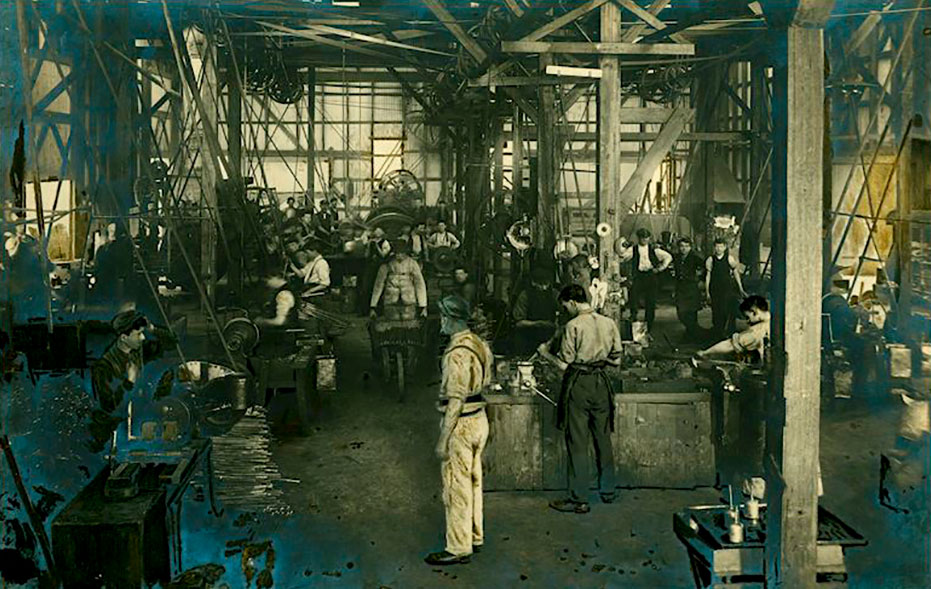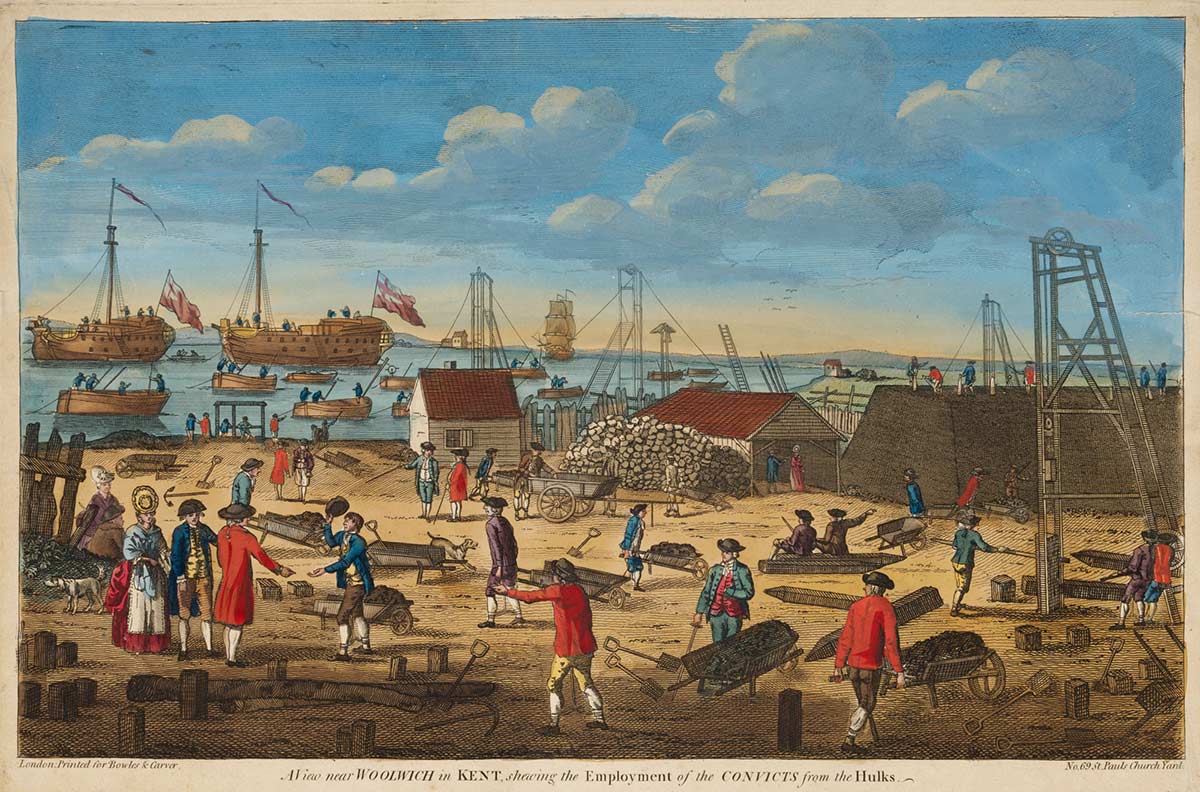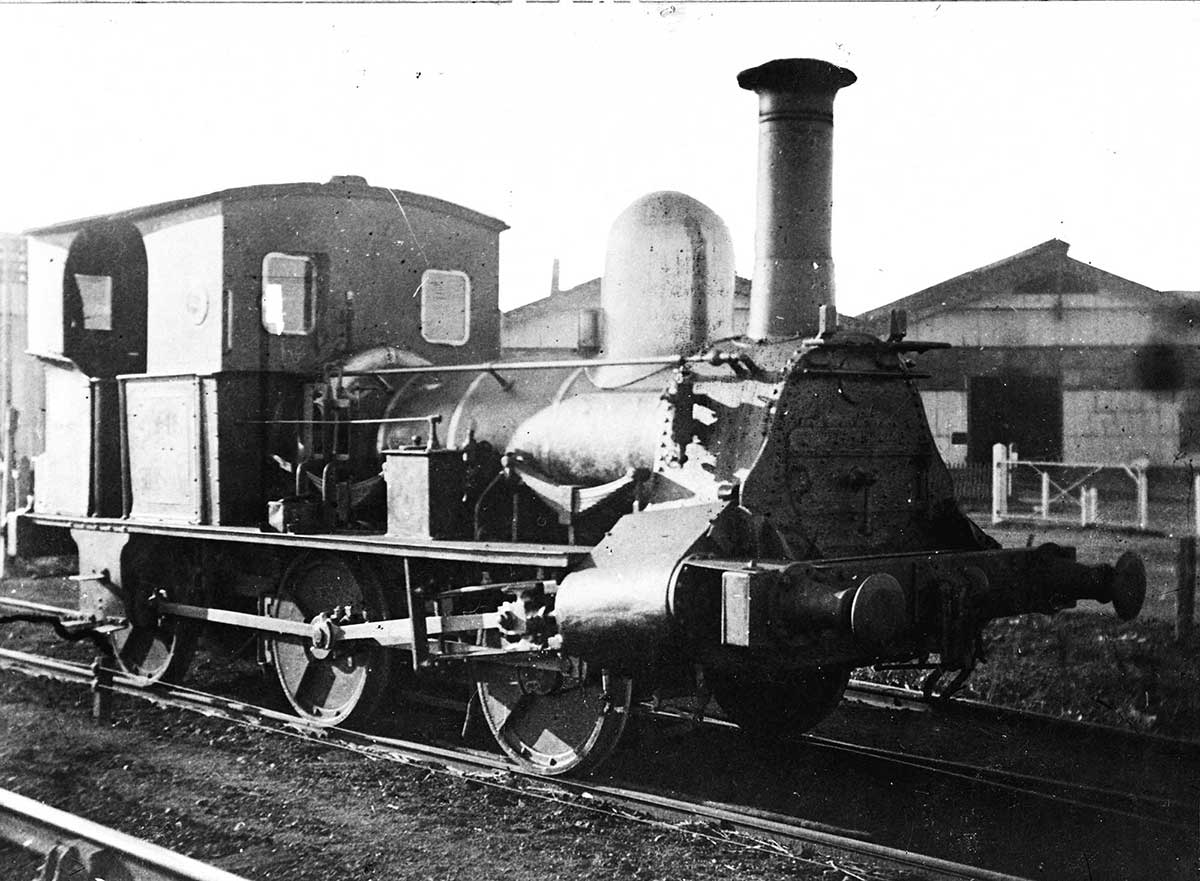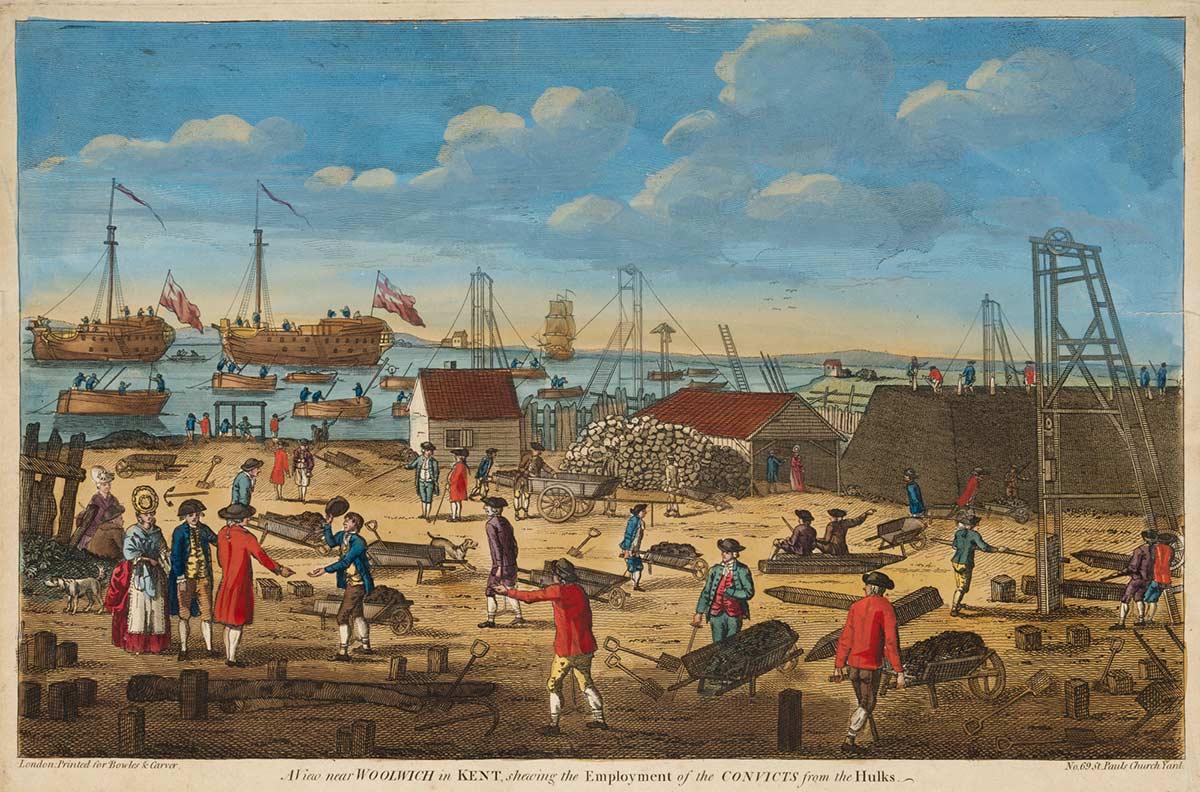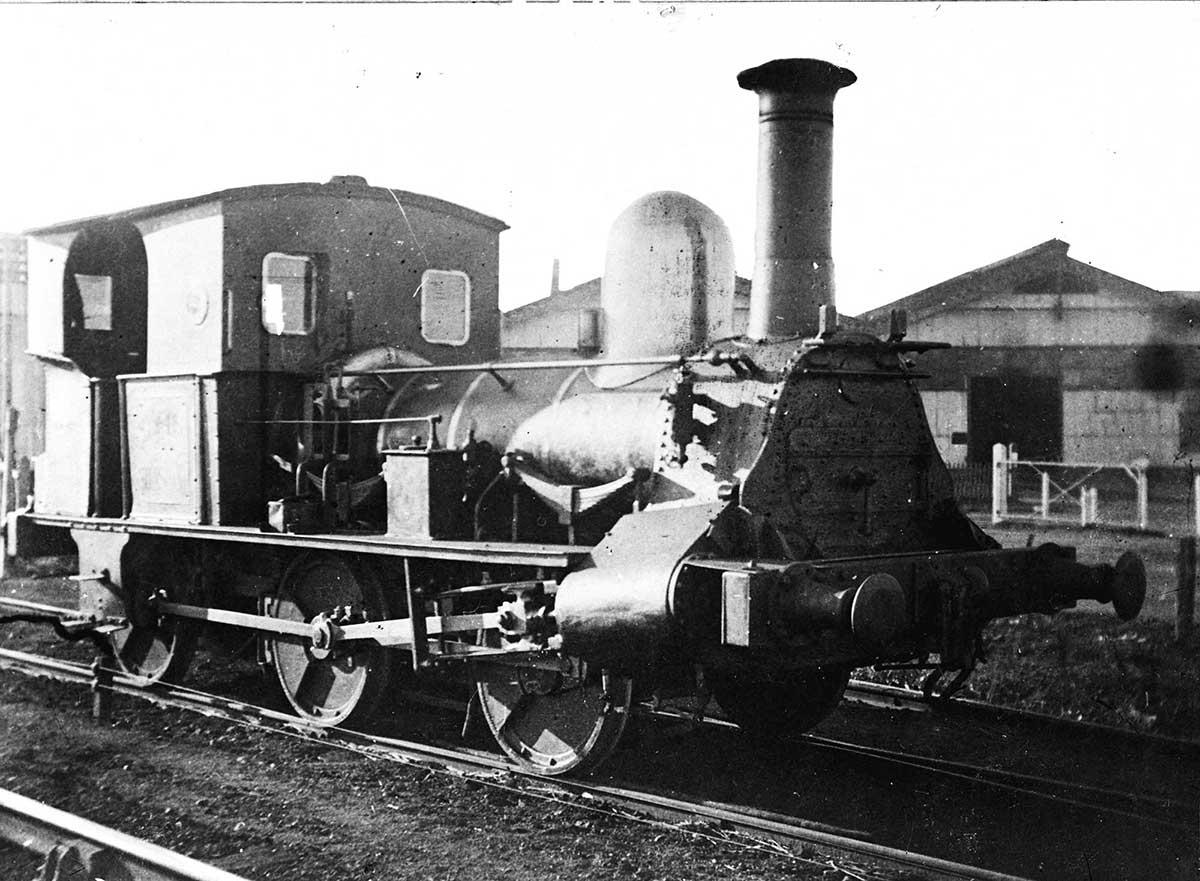Learning module:
Industrial Revolution Defining Moments, 1750–1914
Investigation 1: Introducing the Industrial Revolution (1750–1914)
1.3 Australia and wool

How can we see the impacts and influence of the Industrial Revolution in Australia through the wool industry?
Textiles were a major industry during the Industrial Revolution in Britain. British merchants imported the raw materials, manufacturers processed them, and retailers or exporters sold the manufactured products.
The industry was a major employer and exports brought huge profits for Britain. The two main textiles produced were cotton and wool. During the Industrial Revolution inventions changed the process of transforming the raw cotton or wool into cloth from one which was done by individuals in their homes, to one that was done on a large scale in massive factories.
How did this development during the Industrial Revolution affect Australia?
Your task
Here are eight Evidence Files about sheep, the wool manufacturing industry and developments in Australia.
Your task, either individually or in groups, is to read each file, answer the questions for that file and then summarise what each file tells us about the impacts and influence of the Industrial Revolution on Australia.
Evidence File A
Wool in England
Read this information about the place of wool in the Industrial Revolution:
|
Wool was one of the most important products in Britain, and had been since medieval times.
It was a cottage industry. Local farmers grew the wool. It was washed and cleaned locally, spun into yarn in single-roomed cottages by a family, then woven into garments in another small cottage — all done locally and on a small scale.
During the Industrial Revolution cotton became cheaper to import, and various machines were invented to make the process of manufacturing quicker and on a larger scale. These spinning and weaving machines were powered initially by water, but with the development of the steam engine several spinning or weaving machines could be connected to one engine, producing far more yarn or cloth than could be done by individual spinners or weavers. Here are some comparisons of cottage industry and mechanical processes:
Spinning
Weaving
These machines and processes were adapted to do the same for wool, especially after 1850, when merino wool from Australia, with its longer fleece length than previous wool, became more suited to machine spinning. This increased the demand for raw wool to keep the mills of Britain producing.
Adapted from B Trinder, Britain’s Industrial Revolution, Carnegie Publishing, Lancaster, 2013, pp. 389–393 and RL Hills, Power From Steam, Cambridge University Press, 1989, p. 244 |
1. How was wool turned into clothing during medieval times?
2. What was invented during the Industrial Revolution that helped to improve the manufacturing of wool?
3. Write a short summary describing the impact of the Industrial Revolution on wool manufacturing in England.
Evidence File B
First merinos in Australia
4. When were merino sheep introduced into Australia?
5. Who introduced the first merino sheep to Australia?
6. Why were merino sheep valued?
7. Why were they so rare at first?
8. Who were three people responsible for establishing the wool industry in Australia?
9. Why was merino wool better suited to the expanding wool industry in Europe?
10. Write a short summary about the importance of merino sheep during the Industrial Revolution in Australia.
Evidence File C
The break out from Sydney
Read these two Defining Moments in Australian history: 1813 Blaxland, Lawson and Wentworth cross the Blue Mountains and 1815 Governor Macquarie establishes Bathurst — first inland European settlement and identify this information:
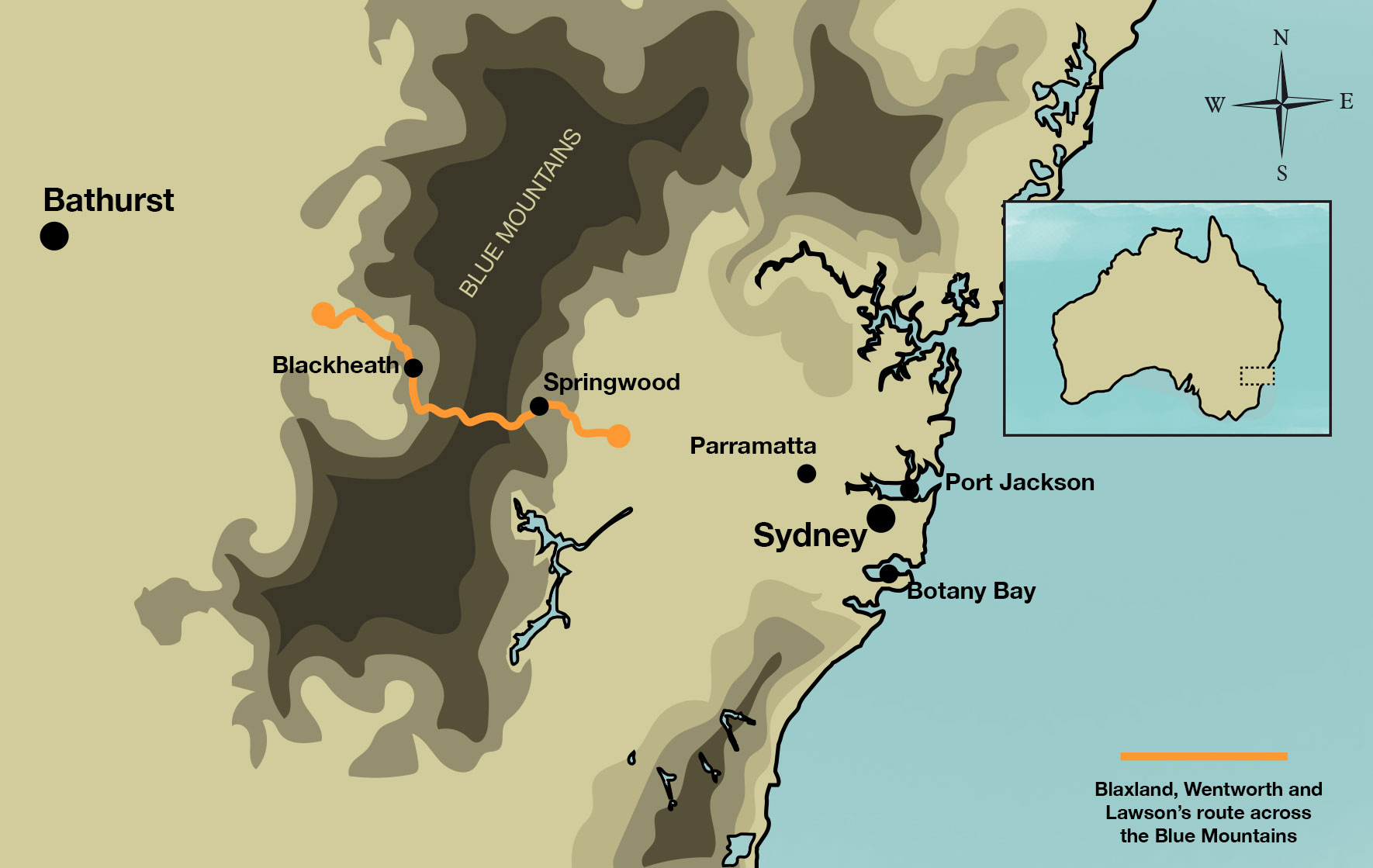
11. In which direction did the colonisation expand once people had crossed the Blue Mountains?
12. Identify at least three factors that help explain why people wanted to expand the Sydney area settlement. (There may be more than three.)
13. What was the main appeal of the new area?
14. What other impacts or consequences were there for the colony?
15. Write a short summary of how the Industrial Revolution played a role in the breakout from Sydney.
Evidence File D
The spread of the pastoral frontier
Read the commentary below and answer the questions that follow.
|
There was demand for both meat and wool from 1860, giving pastoralists a choice between cattle and sheep. Cattle were usually preferred during the early stages of pastoral occupation. They are hardier than sheep, able to cope with coarser feed (uncrushed materials requiring less preparation) and a greater range of environmental conditions, particularly in the wetter areas where sheep are prone to diseases such as footrot and catarrh. Cattle can range almost twice as far for water. They are better at defending themselves against attacks from dingoes, and they can be walked to market. But for an established pastoralist supplying both meat and wool, sheep offered better profits. Only in areas where environmental conditions were too harsh for sheep, such as the tropical north and the wetter areas, did cattle remain dominant.
JCR Camm and John McQuilton (eds), Australians. A Historical Atlas, Fairfax, Syme & Weldon Associates, Sydney, 1987, p.65 |
16. Which two farm animals were strongly preferred by pastoralists from 1860? What did they provide?
17. What were some of the advantages and disadvantages of both in terms of spreading the pastoral frontier?
18. Would the expansion of pastoral areas have been impacted by the Industrial Revolution in Europe? How?
Now look at this map of sheep and wheat growing areas in Australia, created in the 1920s.
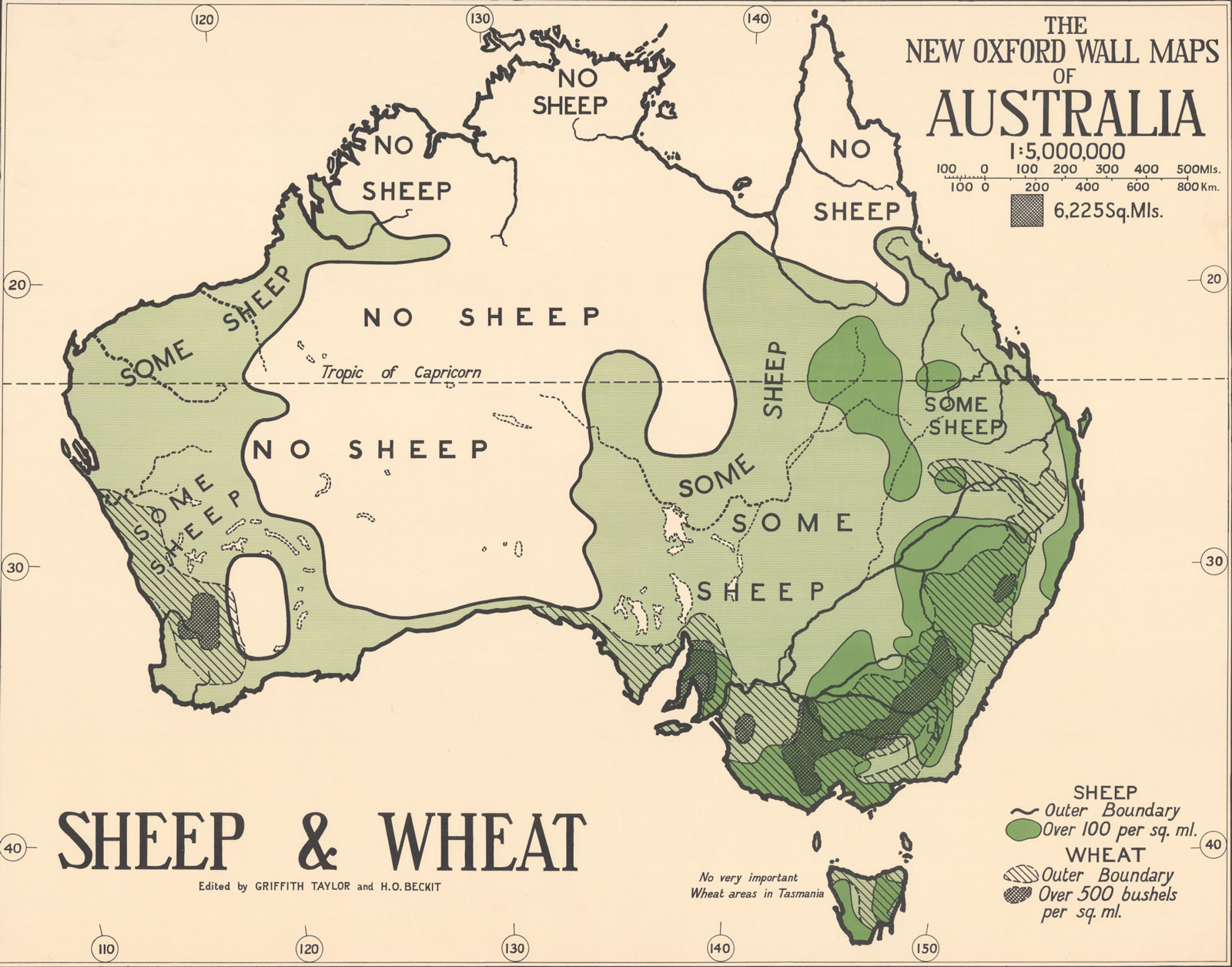
19. What further evidence does the map provide about the spread of sheep and the pastoral frontier throughout Australia?
20. Write a short summary describing the impact of the Industrial Revolution on the spread of the pastoral frontier.
Evidence File E
Black Line
Read the Defining Moment in Australian history: 1830 The ‘Black Line’ – settler force attempts to corral Aboriginal people on the Tasman Peninsula and identify this information:
21. What was the ‘Black Line’ and when was it created?
22. In what part of Tasmania was it implemented?
23. What was its aim?
24. What was the connection between the ‘Black Line’, sheep and the Industrial Revolution?
25. What was the impact of European colonisation in Tasmania on Aboriginal people?
26. Write a short summary of how the ‘Black Line’ was related to the Industrial Revolution.

Evidence File F
Sheep and the Australian environment
Read this information about the impacts of sheep on the local environment:
|
Sheep are not native to Australia. They have hard hooves which compact the soil, and suppress the growth of many native grasses and plants. When compacted, the hardened soil does not support new growth; it cracks and dries out, and rain and wind cause soil erosion and degradation.
The continuous movement of sheep and cattle wore tracks in the soil, which resulted in erosion and damage to the banks of rivers, lakes and ponds.
The sheep competed with kangaroos for native grasses. Once eaten out, the native grasses found it hard to regenerate due to the disturbance to the soil. This destruction of native habitat caused a reduction in natural species variety.
The development of wire fencing enabled large flocks of sheep to be kept close to each other. This made them easier to manage, but resulted in the overgrazing of many areas.
Adapted from Ann Young, Environmental Change in Australia Since 1788, Oxford University Press, South Melbourne, 2000, p. 42 |
27. How did the introduction of sheep lead to an increase in soil erosion and degradation in Australia?
28. Did the introduction of fencing help reduce the environmental impact of sheep? Explain your answer.
29. Write a short summary describing the impact of the Industrial Revolution on the Australian environment.
Evidence File G
Improving the merino sheep breed
Read this information about the way merino sheep were adapted to Australian conditions.
|
The earliest merino sheep were carefully bred to maintain and improve the qualities of their wool.
Between 1850 and 1880 two breeders used breeding techniques to transform the short-stapled Spanish fine-wool sheep into new domestic types, with longer but fine and medium wool. These were Thomas Shaw in South Australia, and the Peppin brothers in the Riverina.
This transformation meant that the industrial machines used for cotton could be adapted and used to process this longer wool.
Breeds were also adapted to meet the environmental conditions in different places. Different areas, such as those with high rainfall or with hot and dry conditions, required differences in the sheep. These were achieved through selective breeding to achieve the best mix of fine wool on an animal that was also best adapted to survive the particular conditions.
Adapted from Laurissa Smith, ‘Wool powerhouse turns 150’, ABC News, 29 September 2011 |

30. How did the development of new domestic types of Australian wool affect the development of industrial machines?
31. Why would producing breeds of sheep to meet the Australia’s varying environmental conditions be important?
32. Write a short summary describing the impact of the Industrial Revolution on the merino sheep breed.
Evidence File H
Sheep and the economy
Read this information about the impacts of sheep on the Australian economy:
|
By 1820 there were about 120,000 sheep in Australia, mainly meat breeds.
In the 1820s 5000 merinos were imported to meet the growing demands of the textiles factories in Britain for raw materials.
By 1848 the colonies were exporting over 5500 tonnes of wool. This was more than any other sheep-producing country was sending to Britain. It was Australia’s main export earner.
By 1850 there were 16 million sheep in Australia, or about 39 sheep per head of population (compared to about 6 per head today).
By 1852 Victoria was exporting 9112 tonnes of wool from 6.5 million sheep. By 1860 there were 20 million sheep, and 106 million by 1892. The export of fleece had increased from 26,000 tonnes to 290,000 tonnes.
The Depression of the 1890s and the great drought of 1895–1904 halved sheep numbers. But the industry revived during the First World War as a result of the demand for wool for uniforms.
Australian Bureau of Statistics, Year Book Australia 2003, Canberra, 2003, pp. 527–534 |
|
Year |
Grain |
Pastoral |
Manufacturing |
Mining |
Total |
|---|---|---|---|---|---|
|
1800 |
£47,000 |
£7,400 |
£4,000 |
£0 |
£58,400 |
|
1810 |
£188,900 |
£68,600 |
£19,200 |
£0 |
£276,700 |
|
1820 |
£245,500 |
£161,000 |
£21,600 |
£0 |
£428,100 |
|
1830 |
£603,200 |
£325,500 |
£149,600 |
£0 |
£1,078,300 |
|
1840 |
£2,465,100 |
£1,261,000 |
£1,051,200 |
£0 |
£4,777,300 |
|
1850 |
£2,371,100 |
£1,774,900 |
£1,192,700 |
£329,000 |
£5,667,700 |
|
1860 |
£8,585,000 |
£6,504,500 |
£8,113,100 |
£10,608,400 |
£33,811,000 |
Wray Vamplew (ed.), Australians. Historical Statistics, Fairfax, Syme & Weldon Associates, Broadway, 1987, p. 128
|
Year |
Sheep numbers |
Wool production (in kg) |
|---|---|---|
|
1850 |
14,482,000 |
18,958,000 |
|
1860 |
20,135,000 |
26,758,000 |
|
1870 |
40,177,000 |
78,677,000 |
|
1880 |
53,896,000 |
160,632,000 |
|
1890 |
85,809,000 |
209,798,000 |
|
1900 |
72,348,000 |
201,959,000 |
|
1910 |
94,454,000 |
357,221,000 |
|
1920 |
79,455,000 |
345,688,000 |
Wray Vamplew (ed.), Australians. Historical Statistics, Fairfax, Syme & Weldon Associates, Broadway, 1987, p. 131
33. Why was the exporting of sheep to Britain so important for the Australian economy in the nineteenth century?
34. Calculate the percentage increase in wool production in Australia from 1850 to 1920. Do you think this increase was only due to the corresponding increase in sheep numbers? Give reasons for your answer.
35. Write a short summary describing the impact of the Industrial Revolution on the Australian economy.
Conclusion
Now that you have complete the short summaries for each evidence file you will be able to answer this concluding question:
36. What impacts did developments in the textile industry in Britain during the Industrial Revolution have on Australia, and how did improvements in Australian sheep production make a difference?






